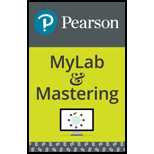
Concept explainers
(a)
Interpretation:
Whether the flammability of ether is a physical or a chemical property is to be stated.
Concept introduction:
The change in the physical property of a substance is known as a physical change, which is reversible in nature.
The change in the chemical property of a substance is known as a chemical change, which is irreversible in nature.
(b)
Interpretation:
Whether the reddish-orange color of bromine is a physical or chemical property is to be stated.
Concept introduction:
Chemical reactions are the rearrangement of atoms, molecules, or ions to form other chemical substances. Chemical changes are of two types: physical change and chemical change.
The change in the physical property of a substance is known as a physical change, which is reversible in nature.
The change in the chemical property of a substance is known as a chemical change, which is irreversible in nature.
(c)
Interpretation:
Whether the vaporization of ethanol is a physical or a chemical property is to be stated.
Concept introduction:
Chemical reactions are the rearrangement of atoms, molecules, or ions to form other chemical substances. Chemical changes are of two types: physical change and chemical change.
The change in the physical property of a substance is known as a physical change, which is reversible in nature.
The change in the chemical property of a substance is known as a chemical change, which is irreversible in nature.
(d)
Interpretation:
Whether the condensation of steam to water is a physical or a chemical property is to be stated.
Concept introduction:
Chemical reactions are the rearrangement of atoms, molecules, or ions to form other chemical substances. Chemical changes are of two types: physical change and chemical change.
The change in the physical property of a substance is known as a physical change, which is reversible in nature.
The change in the chemical property of a substance is known as a chemical change, which is irreversible in nature.
Want to see the full answer?
Check out a sample textbook solution
Chapter 3 Solutions
EP INTRODUCTORY CHEM.-MOD.MASTERINGCHEM
- Suggest physical changes by which the followingmixtures can be separated.(a) iron filings and wood chips(b) ground glass and sucrose (cane sugar)(c) water and olive oil(d) gold flakes and waterarrow_forward(a) Carbon and iron are both elements. What is an element?arrow_forwardClassify each property as physical or chemical. (a) the tendency of silver to tarnish(b) the shine of chrome(c) the color of gold(d) the flammability of propane gasarrow_forward
- Classify each of the following as a physical change or a chemical change. (a) Touching a lit candle to hydrogen soap bubbles gives an explosion. (b)Heating water in a flask produces moisture on the glass. (c) Combining two colorless solutions gives a yellow solid. (d) Pouring vinegar on baking soda produces gas bubbles.arrow_forwardWhich of the following is best characterized as a heterogeneous mixture? Group of answer choices (a) Air (b) Sandy Dirt (c) An aqueous solution of NaCl (d) Electrum (an alloy of gold and silver) (e) Clear Diamondarrow_forwardYou are given a hammer, a battery, a bulb, wires and switch.(a) How could you use them to distinguish between samples of metals and non- metals?(b) Asses the usefulness of these tests in distinguishing between metals and non-metals?arrow_forward
- 7. State whether each of the following represents a chemical change or merely a physical change:(a) A few grams of sucrose (table sugar) are placed in a small beaker of deionized water; the sugar crystals “disappear,” and the liquid in the beaker remains clear and colorless.(b) A copper statue, over time, turns green.(c) When a teaspoon of baking soda (sodium bicarbonate) is placed into a few ounces of vinegar (acetic acid), volumes of bubbles (effervescence) are produced.arrow_forward6. Match each term on the left with the most appropriate description on the right. Ku (a) pure substance (b) mixture (i) two or more substances (ii) a substance made from only one kind of particle (iii) substances in two different phases that do not settle out (iv) one substance dissolved in (c) solution (d) suspension another substancearrow_forwardClassify each change as physical or chemical. (a) the explosion of gunpowder in the barrel of a gun(b) the melting of gold in a furnace(c) the bubbling that occurs when you mix baking soda andvinegar(d) the bubbling that occurs when water boilsarrow_forward
- Select the best answer or answers from the choices given: Which of the following does not describe a mixture? (a) properties of its components are retained, (b) chemical bonds are formed, (c) components can be separated physically, (d) includes both heterogeneous and homogeneous examples.arrow_forwardWhich of the following are pure substances? Explain. (a) Calcium chloride, used to melt ice on roads, consists of two elements, calcium and chlorine, in a fixed mass ratio. (b) Sulfur consists of sulfur atoms combined into octatomic molecules. (c) Baking powder, a leavening agent, contains 26% to 30% sodium hydrogen carbonate and 30% to 35% calcium dihydrogen phosphate by mass. (d) Cytosine, a component of DNA, consists of H, C, N, and O atoms bonded in a specific arrangement.arrow_forwardClassify each change as physical or chemical. (a) the rusting of iron(b) the evaporation of fingernail-polish remover (acetone) from the skin(c) the burning of coal(d) the fading of a carpet upon repeated exposure to sunlightarrow_forward
 General, Organic, and Biological ChemistryChemistryISBN:9781285853918Author:H. Stephen StokerPublisher:Cengage Learning
General, Organic, and Biological ChemistryChemistryISBN:9781285853918Author:H. Stephen StokerPublisher:Cengage Learning Introductory Chemistry: An Active Learning Approa...ChemistryISBN:9781305079250Author:Mark S. Cracolice, Ed PetersPublisher:Cengage LearningChemistry: Matter and ChangeChemistryISBN:9780078746376Author:Dinah Zike, Laurel Dingrando, Nicholas Hainen, Cheryl WistromPublisher:Glencoe/McGraw-Hill School Pub Co
Introductory Chemistry: An Active Learning Approa...ChemistryISBN:9781305079250Author:Mark S. Cracolice, Ed PetersPublisher:Cengage LearningChemistry: Matter and ChangeChemistryISBN:9780078746376Author:Dinah Zike, Laurel Dingrando, Nicholas Hainen, Cheryl WistromPublisher:Glencoe/McGraw-Hill School Pub Co Chemistry by OpenStax (2015-05-04)ChemistryISBN:9781938168390Author:Klaus Theopold, Richard H Langley, Paul Flowers, William R. Robinson, Mark BlaserPublisher:OpenStax
Chemistry by OpenStax (2015-05-04)ChemistryISBN:9781938168390Author:Klaus Theopold, Richard H Langley, Paul Flowers, William R. Robinson, Mark BlaserPublisher:OpenStax Chemistry: The Molecular ScienceChemistryISBN:9781285199047Author:John W. Moore, Conrad L. StanitskiPublisher:Cengage Learning
Chemistry: The Molecular ScienceChemistryISBN:9781285199047Author:John W. Moore, Conrad L. StanitskiPublisher:Cengage Learning Living By Chemistry: First Edition TextbookChemistryISBN:9781559539418Author:Angelica StacyPublisher:MAC HIGHER
Living By Chemistry: First Edition TextbookChemistryISBN:9781559539418Author:Angelica StacyPublisher:MAC HIGHER





